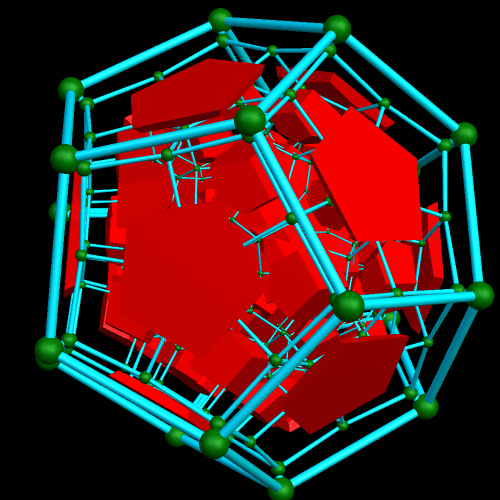This is one projection of the four-dimensional hyperdodecahedron, or 120-cell, rendered in Zome. All the part for this come in a single kit, and, if you want it for yourself, you can find it for sale at this website.

I did have student help with the construction of this, for which I am grateful. However, for legal and ethical reasons, I cannot credit the students by name.
Here’s a closer view, through the “core” of all-blue pentagons:

Zome is a great product. I recommend it strongly, and without reservation (and no, they aren’t paying me anything to write this).





